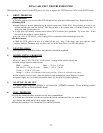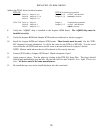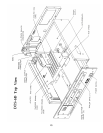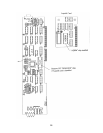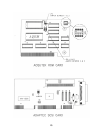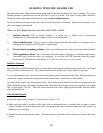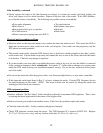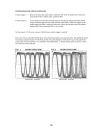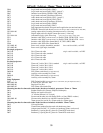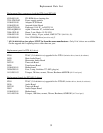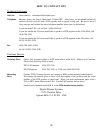
26
BLINKING TIMECODE READER LED
The timecode reader LED should remain bright and not flash more than a few times a minute. Excessive
flashing indicates a problem and should be fixed as soon as possible. The optics on the reader should be
blown off with compressed air at least once a day, but never adjust the lens.
Excessive blinking can cause drop-outs (if the 4-second flywheel is exceeded). Drop-outs can produce wow,
edits, and repeated sound track.
There are four things that can cause the reader LED to blink:
1) Bad/poor timecode. This is usually limited to a single reel or trailer, and is encountered
infrequently. If seeing bad reels regularly, check for other problems.
2) Film instability/speed. This is caused by film bouncing through the reader or a projector that is
running at the far end of the DTS player’s speed range.
3) Electrical noise/grounding problems. One cause it the projector’s chassis not being earth grounded.
4) DTS equipment problem. This is caused by either the reader or the player. If another reader can be
borrowed from a working screen, try swapping. It could be old DTS firmware inside the player.
Swap out any TCR firmware older than V1.17 (D422-U14 inside player, card with 4 LEDs).
Bad/Poor Timecode
On 35mm film, the DTS timecode track is located between the picture and the analog sound track. On 70mm
film, its located outside the perfs. The 35mm timecode track should start 4 perfs after the sync pop.
To view the timecode track on-screen, remove the aperture place when playing the film. The timecode track
should look straight and not be assimilated into the picture frame, sound track, or perforations.
You many use a loop to view the timecode track. The timecode itself should look clear and symmetrical. Its
shape should be oblong with slightly rounded ends. Bad timecode will appear fuzzy, not running in a straight
line, or with pieces “cut off”. The area around the timecode can be light purple but make sure the picture
does not bleed into it.
Film Instability/Speed
• Check the speed of the projector. It should run at 24 fps +/-5%.
• Make sure the reader’s auxiliary roller (back with an adjustable arm) is installed and provides as much
wrap as possible on the incoming silver roller. It should be pivoted towards the cable end of the reader and
be back as far as possible.
• Watch the film run through the reader. If aligned properly, the film should contact each side of the roller
evenly.



